Cooled by Air or Water
Today, cooled by air or water? The University of Houston's College of Engineering presents this series about the machines that make our civilization run, and the people whose ingenuity created them.
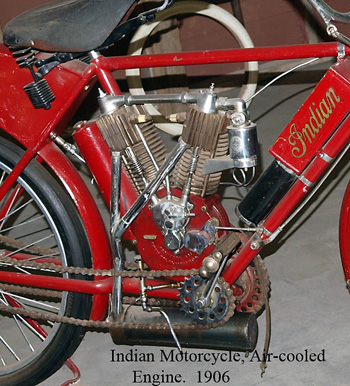 Let's imagine that we're late 19th-century engineers and we've just created a new internal combustion engine. So: how to cool the cylinders? The temperature reaches, maybe, 3000 degrees Fahrenheit inside them. They'll be ruined if we don't cool them.
Let's imagine that we're late 19th-century engineers and we've just created a new internal combustion engine. So: how to cool the cylinders? The temperature reaches, maybe, 3000 degrees Fahrenheit inside them. They'll be ruined if we don't cool them.
We can put cooling fins on them, then force cool air to flow around them. Or we can jacket the cylinders and force cool water through the jacket. That gives better cooling but the water's hot when it leaves the jacket. Now we need a radiator to cool it before it recirculates. (Ah, this world of engineering compromise!)
We began the 20th century by powering our new cars, airplanes, and motorcycles with IC engines. At first we improvised. The Wright Brothers simply let their engine boil water off until a reservoir ran out. But they ran it only a few minutes at a time.
Then power-to-weight ratios shot upward. More heat had to be removed from less space, while engines ran for hours, not just minutes. Automobiles were soon water-cooled. (And so they are today with few air-cooled exceptions -- like the old Volkswagen Beetle.)
But liquid cooling means a lot of extra equipment: radiators, water pumps -- more weight. At first it was too much for the new aeroplanes and motorcycles. Early motorcycles cylinders were circled with cooling fins and placed so air flowed past them.
Airplane engines had to be a lot more powerful -- many more cylinders. So the French perfected a surprising American invention: the rotary engine. Nine or so cylinders radiating outward from a fixed central shaft and rotating about it. That sounds cumbersome, but it made for very efficient air cooling.
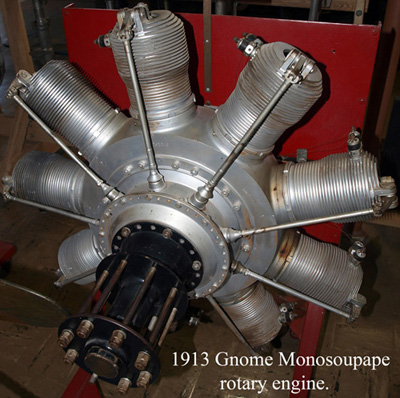
In WW-I, the Allies flew both rotary engines and water-cooled V-8s. The Germans liked inline, water-cooled, 6-cylinder engines. Still, the Red Baron's Triplane used a copy of a French rotary.

So compromise continued, at least on smaller machines. It was really no contest on large airplanes. Big multi-engine transports and bombers went to air-cooled radial engines.
But, as motorcycles gained speed many began using water-cooled engines. Engines could now be made compact enough to justify the added bulk. The tradeoffs stayed in balance during WW-II. Navy fighter engines were largely air-cooled, but the Army liked water-cooled V-12 engines. Still, the last best fighters of that war, both German and American, used air-cooling.
I've said before that users complete any new technology. Only they can finally pick the best form. But every now and then two forms each have enough merit to pit consumers against one another. Just listen to Mac and PC owners going at it.
So it was with air and water cooled engines. Our cars are now largely water-cooled. Most propeller-driven light planes are air-cooled. Motorcycles might be either. But after a century, the alternative continues to lurk. And that's good. For a technology, not yet frozen in place is a technology that will keep improving.
I'm John Lienhard at the University of Houston, where we're interested in the way inventive minds work.
See the following web sites on IC engine cooling, and on motorcycle engines and their cooling.
For an account of early automobile engine cooling systems in context, see: G. W. Hobbs and B. G. Elliott, The Gasoline Automobile. (New York: McGraw-Hill Book Co., Inc., 1920). (Black and white drawings, below, are from this source.)
Photo images by J. Lienhard: Indian motorcycle and Gnome engine from the Pioneer Village Museum in Minden, Nebraska; Albatros engine from The Old Rhinebeck Aerodrome in New York; Wright engine replica, below, from the Wright Monument in Kill Devil Hills. My thanks to colleague Keith Hollingsworth for additional counsel.
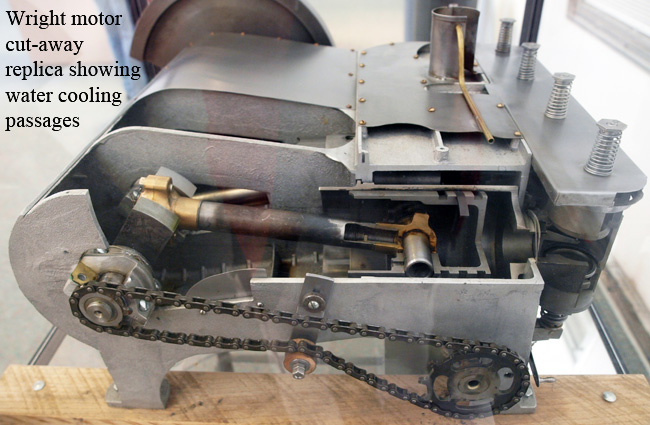
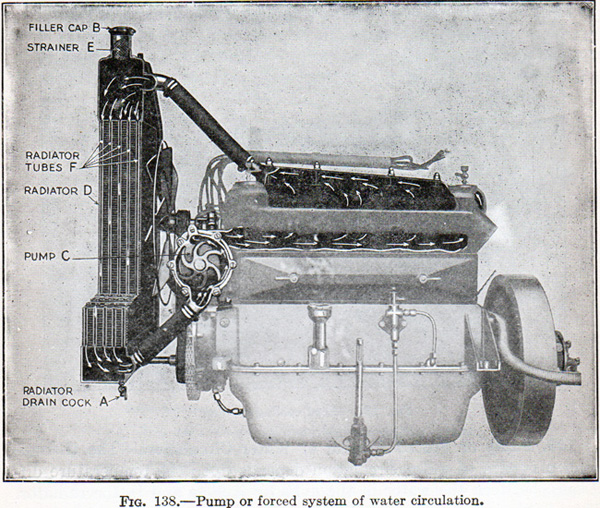
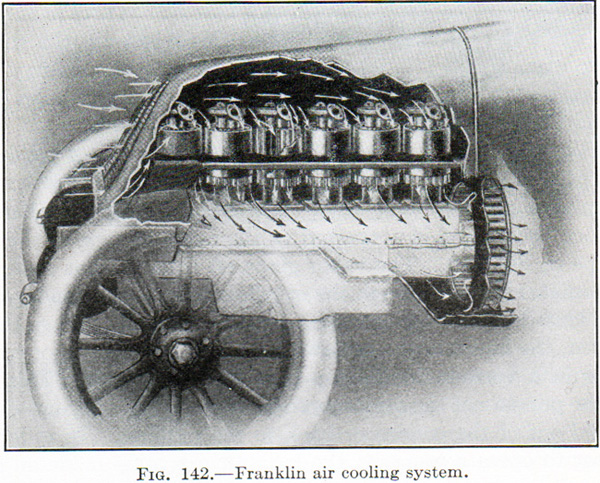
This last image is an atypical example of an early air-cooled automobile engine.